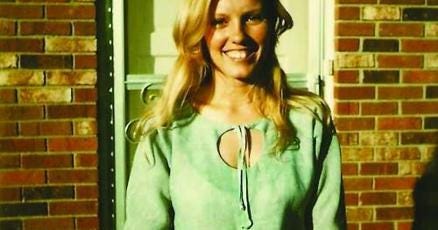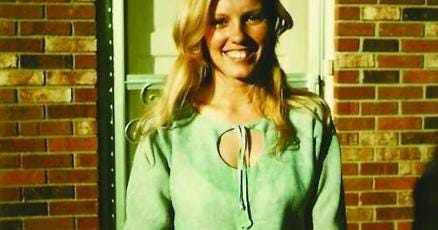The following article I submitted to a periodical published out of Reed city last year as the anniversary of this murder was approaching. I received a reply and was told it would go to print. As time went on, along with the annual “walk of remembrance”, I never heard back and as far as I know the article was never published.
Three years ago, I did a deep dive into this case, listening to a podcast series about the details and reading an accompanying book with documents and more details about the murder. Local lore states that Janette was murdered by a local wealthy millionaire but I have never come across a compelling argument as to why this is the theory. How to find the person responsible for this crime is detailed in the article below. I made this argument over a year before the recent JonBenét Ramsey documentary was released on Netflix with the father asking the same questions I post below. I don’t know if the reason for not using the new technology is due to ignorance, laziness, or stupidity but for some reason nobody seems to have the motivation to move information around and learn who killed this woman over forty years ago.
Janette Roberson Revisited
By: Matthew Gilman
The forty plus years that have gone by since the murder of Janette Roberson has left the mystery of her killer with more questions than answers. In 1983, Janette’s body was discovered in the basement of the Gambles store, that also served as the pet department. If you are reading this, I will skip the gruesome details of her death considering that, odds are, you already know them. I heard about this murder through local news and social media post about the 40th anniversary march. What made me curious about this particular case was the question, what was still being done about it?
Cold cases have a difficult time seeing the light of day once they go unsolved for a period of time. New cases are filed and the police pursue what they are most likely to solve. These cases can be limited to the technology that is available at the time. DNA was collected from the scene in Janette’s case and from what I have found in researching this story is that a DNA profile was made of the suspect back in 2014. That data was put into the Michigan Criminal DNA database with no results coming back as a match. That was the last time I was able to find when someone did a search for the suspect, but I will point out that technology was limited to law enforcement at that time as well.
The first trial to use DNA as evidence was in the United Kingdom in 1986 to verify the confession of a rape/ murder. A year later, Tommie Lee Andrews would be convicted of a burglary turned into a rape in the United States. In 2014, the Michigan State Police had the access of the Michigan State Criminal Database to run the sample through. Today, there are several public databases at their disposal that enables forensic genealogists to pinpoint suspects decades after a crime took place.
The Golden State Killer was found after detective Paul Holes put a DNA profile into www.ancestry.com and found several members of the killer’s family on the website. While there appears to be speculation that the lead suspect is deceased in Janette’s murder that doesn’t close the case or give answers to the family or community. It is unknown who the DNA profile fits closest to even though it would give information on ethnic background, hair and eye color, height, among other features. With there being no obvious link between the DNA profile and suspects in the murder there is reason to continue on with this search.
In California, there were two cases of indigenous women that had been sexually assaulted and murdered in 1980. Their identities were not known when their killer, Wilson Chouest, was prosecuted over thirty years later, in 2018. He was already in prison and his DNA was in the criminal database. The two women however were still unknown. DNA was taken from the molars of both Jane Does and added to a website call www.gedmatch.com where it places the DNA of an individual into a family tree using unique genes. One Jane Doe, Shirley Soosay, was matched with an indigenous family in Canada, but the other woman is still unknown.
Hope shouldn’t be lost that Janette’s killer won’t be found. In 2019, Raymond Vannieuwenhoven, was convicted of the double murder of a couple at the Marinette County Park, WI, in 1976. He would later die in 2022 at the age of 86 but he was still alive to stand trial for the crime. Quoting an article from Fox 11 News:
https://fox11online.com/news/local/vannieuwenhoven-found-guilty-in-1976-killing-of-couple?src=link
“a DNA sample from evidence at the crime scene was determined to be from a particular family. After samples tested from Vannieuwenhoven’s brothers weren’t a match, a sample from him—obtained from a licked envelope for a police performance, filled out by Raymond—was a match…”
Technology has advanced in the 9 years since the last test was done using the DNA from Janette’s murder and while DNA was expensive twenty years ago a sample can be processed and uploaded to a genealogy database starting at $69. Reed City is a small city compared to most and it is one of those places where everyone seems to know everyone else. Even if a small handful of people had signed up for www.ancestry.com or www.23andme.com it might be enough to weed out most suspects and focus on the one person responsible for this crime.
On a bad day, the DNA is uploaded into the server and there are no matches, however the work doesn’t end there. Once the profile is uploaded the program continues to find matches from future DNA profiles that are added. Days or years later an email notification will be sent to law enforcement stating that there is a new match to the person they are seeking information on. Once added, the DNA profile continues to work regardless of what the police are focusing on in the meantime. It could turn into a continued waiting game but unless the suspects entire family was wiped out in some freak accident a distant match of some kind will eventually pop up.
Cold cases like this one leave a scar on a community. There is always that doubt and speculation as to who did the crime, if that person is still living amongst them. It also places doubt on the ability of law enforcement and that is a bond that is sacred if police are to be trusted in a community. What everyone needs here is a win. There is no loss in finding Janette’s killer. Perhaps there won’t be a trial and we will find that the individual is deceased, but doesn’t the family deserve at least a name? In something like this all questions won’t be answered, but at least a long chapter of Reed City’s history will finally be closed.





